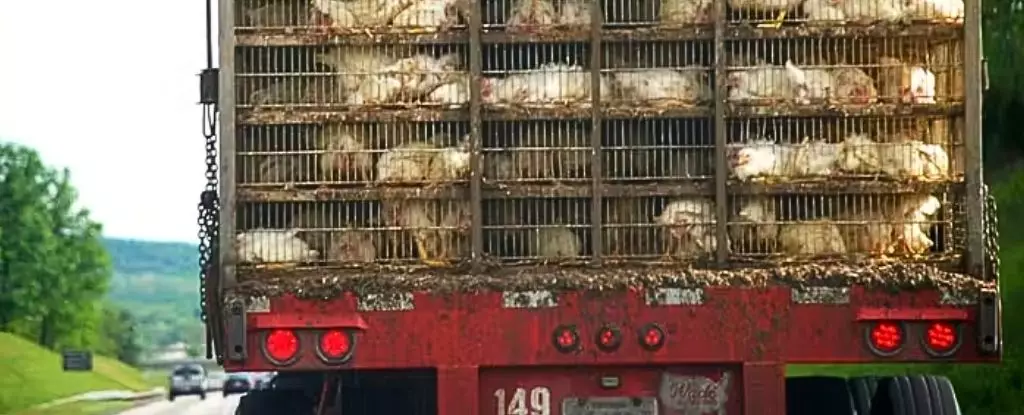In the realm of public health, the art and science of disease forecasting stand as an intricate challenge, closely resembling weather predictions. While we possess tools to identify emerging threats, the intricacies of specific outbreaks often elude our grasp. An especially disquieting player in this infectious drama is the H5N1 strain of avian influenza, a virus that has sparked alarm among scientists and health experts. Though incidents of human infection remain relatively rare, the statistics are chilling: with over 900 documented cases since 2003, nearly half have resulted in death. This staggering 50% mortality rate starkly contrasts the 2.5% rate associated with the notorious 1918 flu pandemic, underscoring the propagating danger that lurks in the shadows.
The looming specter of H5N1 offers a somber reminder that while the world has made great strides in medicine, our systems remain underprepared for potentially catastrophic outbreaks. When a virus poised to evolve toward human transmission is involved, we must reevaluate how we prepare and respond.
Historical Perspective: An Anthropological Examination
The anthropological lens allows for a deeper understanding of how human actions are intricately woven into the narratives of infectious disease evolution. The recent scholarly work, “Emerging Infections: Three Epidemiological Transitions from Prehistory to the Present,” provides a thought-provoking analysis of mankind’s role in the travails of infectious diseases throughout history. From our first major encounters in the Neolithic era to today, evidence suggests a repetitive cycle of diseases emerging in alignment with human behavior.
Observations reveal that, much like previous pathogens, H5N1 follows a recognizable pattern down the path of zoonotic spillover—where viruses leap from animals to humans. The incremental mutations that make such transitions possible create a critical juncture where proactive measures can significantly alter the course of potential devastation. These interludes, in which we can observe and react, hold the key to averting a global crisis.
The Spillover Conundrum: Nature’s High-Stakes Experiment
The concept of spillover presents a complex challenge that encapsulates the evolutionary pressures faced by H5N1. For this virus to successfully leap to human hosts, it must adapt its molecular structures to infiltrate our biological systems—an endeavor replete with uncertainties and pitfalls. The odds are stacked against these pathogens; they must contend with a multitude of genetic barriers across species.
Yet, around the world, we are witnessing what epidemiologists term “viral chatter.” This term refers to sporadic cases of H5N1 that intermittently pop up, a topic hardly trumpeted by media outlets. Such sporadic outbreaks, primarily confined to close interactions between workers and infected animals, only amplify the unseen tension. With each reported case, we catch fleeting glimpses of a larger, more consequential narrative—the possibility of human-to-human transmission lurking just beneath the surface.
What remains unclear is how long it will take for this to materialize. As influenza viruses exhibit an astonishing ability to adapt and evolve, an impending threat keeps mounting. Given that H5N1 has found hosts in at least 450 animal species, one cannot help but consider how soon our responses may need to evolve as well.
Proactive Measures: Reshaping Our Future
If there is a silver lining amid this troubling landscape, it rests in the fact that human agency plays a pivotal role in potentially curbing the threat of H5N1. Collective action is necessary, requiring both governments and industries to proactively engage in agricultural and public health improvements.
One of the most impactful steps is re-evaluating our treatment of food animals. The reality is stark: the sheer volume of poultry exceeds that of all wild bird species, effectively shifting the geographic footprint of H5N1 outbreaks. By addressing industrialized farming practices that prioritize profits over biological safety, we create an opportunity to mitigate disease spread.
On a more personal level, individuals can enhance their defensibility through seasonal vaccinations against common influenza strains. While it may appear disconnected from avian influenza, immunizing against seasonal flu drastically reduces the chances for H5N1 to merge with its human cousins, a merging that could have dire consequences.
Finally, the focus must extend to global efforts aimed at improving nutrition and sanitation. History consistently reveals that bolstered immune systems and reduced exposure to pathogens are fundamental to mitigating the impact of infectious diseases. Given the interconnected nature of modern society, the peril faced by one nation is the concern of all.
In the ongoing narrative of public health, one undeniable truth stands out: for over 10,000 years, our decisions and actions shape the evolutionary fate of infectious diseases. It is imperative that we grasp this reality and work toward a future where we dictate the course of these trajectories, rather than succumb to their deadly whims.

